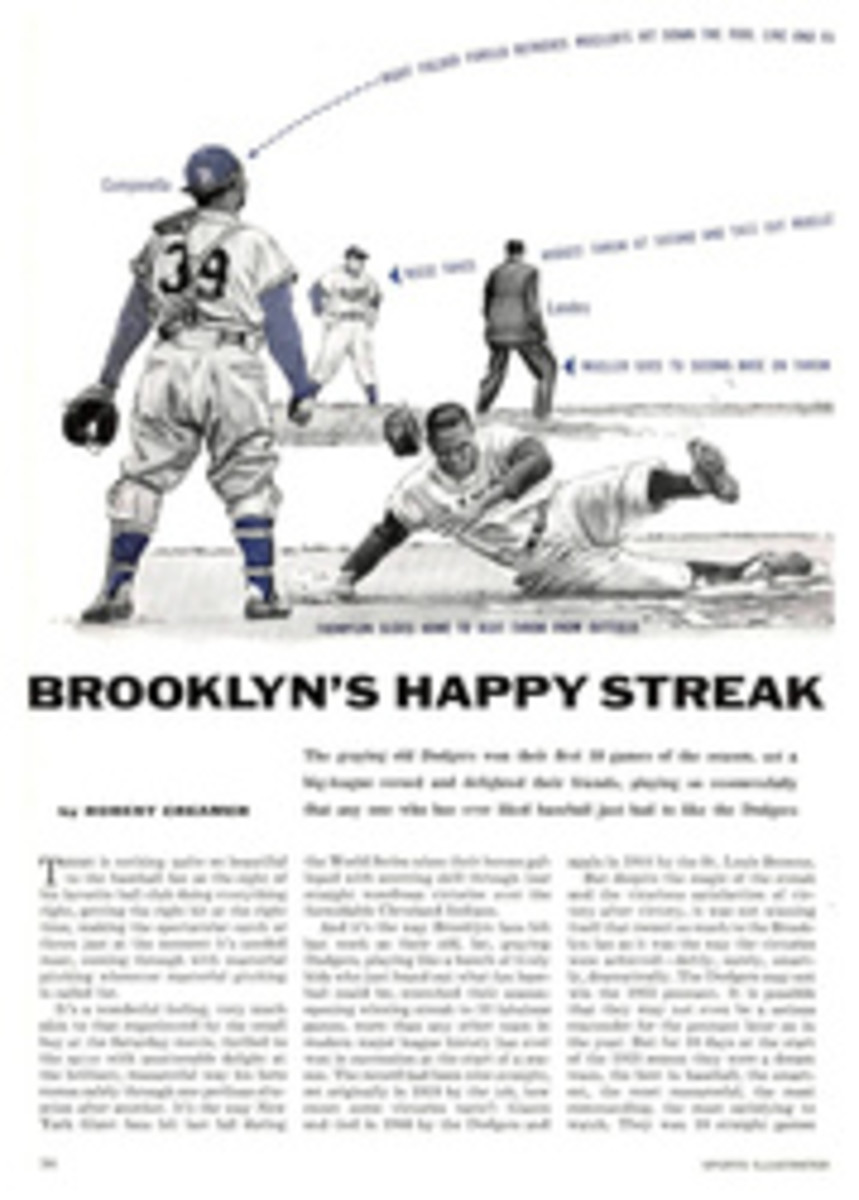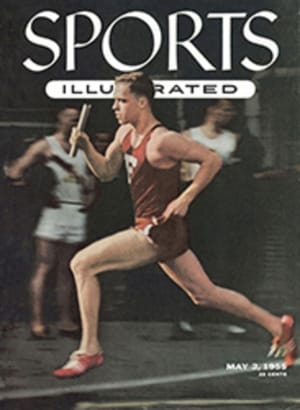
VETERANS ROLL HAPPILY, SOME UNKNOWNS SENSATIONALLY, AND FORT WORTH HOLDS FORTH AT THE ABC IN FORT WAYNE
By midafternoon of Wednesday, April 20, the three days of cooling, intermittent showers had ended and the streets of Fort Wayne steamed under a broiling sun. It was especially hot in the immense Memorial Coliseum where 152 men—aged 19 to 70 and including one man on crutches—competed in the doubles event of the 52nd American Bowling Congress championships before noisy spectators who fanned themselves with programs and mopped their brows with damp handkerchiefs. At the end of the second of the three-game series the contestants paused to survey the scores on the huge blackboards at the rear of each of the 38 shining alleys. The highest score was: Lange 222, Lindsey 235; total 457.
"It seems like the old days, Mort," said Herb Lange, 54, manufacturer of kitchen equipment of Watertown, Wis.
OLD-TIME CHAMPIONS
Mort Lindsey, wealthy 66-year-old retired businessman and bowling proprietor of Stamford, Conn., grinned happily. Then he and Lange, both members of Bowling's Hall of Fame, went on to roll a commendable third game and post a 1,213 series. The score was not likely to be among the first 200 in the 72-day competition—which ends June 5 and in which 30,000 bowlers are participating—but it was sensational for two men whose years aggregate 120. Lindsey was champion before World War I and Lange was the first U.S. collegiate titleholder while he attended Wisconsin University in the early 1920s.
Although the ABC had not yet reached the halfway mark last week it seemed the story would be the same as in the past: a top quintet winning the team event, a star taking the all-events title and unknowns scoring in the doubles and singles. On the night before Lindsey and Lange rolled in the doubles, the Pfeiffer Beers of Detroit, ABC Champions in 1952 and '53, recorded 3,136 to go far in front for a possible third title in four years. And on the following night, Fred Bujack of Pfeiffer scored 279-735 in the singles to take the all-events lead with 1,993. Such formidable rivals as Stroh Beer of Detroit (U.S. champions), Budweiser of St. Louis and Cerlin Motors of New York (led by defending singles champion Tony Sparando) had yet to roll, however, and the Pfeiffers were by no means counting their prize money.
The singles leader at this point was Eddie Gerzine, 36, a left-handed tavern and alley proprietor of Milwaukee. His season average was only 180, but he rolled 738, the best series of his life, on March 28. And on that same day, Dr. Myron Ericksen, 47-year-old pharmacist of Racine, Wis., a 177-average man, bowled the 14th perfect 300 game in ABC history. Two others who never before were in the national spotlight—Harry Zoeller, 40, and George Pacropis, 41, of Wilkes-Barre, Pa.—led the doubles with 1,365. Pacropis is a 6-foot, 300-pound crane operator, yet is as graceful and light on his feet as men little more than a third his weight.
On the opening night of the tournament the Midwest was hit by one of the year's worst snowstorms. James Bissett, 33, driving to Fort Wayne from his Dayton, Ohio home, narrowly missed death when his car overturned on the highway near Winchester, Ind. Help arrived quickly, his car was righted, and a police officer suggested Bissett go to a hospital for an examination. Instead he sped on to the coliseum and rolled 537 to lead his Fighting Irish quintet, from the Dayton Frigidaire plant, into first place in the booster division (under 851-average teams). Their 2,795 was still at the top of the board last week.
FORT WORTH VS. MIAMI
Because of the tournament's prestige—and the millions of dollars spent by the bowlers and their rooters—almost every town in the country with a building large enough to house approximately 40 lanes and thousands of spectators seeks to play host to it. Tournament sites are selected two years in advance by the executive committee of the ABC. Rochester has been named for 1956 and by last week, when the committee met at Fort Wayne, the field for 1957 had narrowed to Miami, Buffalo and Fort Worth, Texas with Miami apparently far ahead. I asked at least half of the 64 executive committeemen how they felt about 1957 and almost all said that the bowlers in their area "want to see Miami."
But on Monday, as the delegates met for their first formal conference on ABC regulations, thousands of bowlers paraded through hotels and into the coliseum with huge red and white "Fort Worth Next" buttons. On Tuesday, Chamber of Commerce members passed out straw ten-gallon hats and red bandannas—not only to bowlers but to every pretty Fort Wayne girl. On Wednesday, Walter Jetton, who calls himself King of Barbecue, drove into town from Fort Worth with a large truck equipped with kitchen, a trailer containing Texas chickens and sides of longhorn and a chuck wagon. From the wagon he and his helpers, garbed as cowboys, passed out barbecued meats to bowlers and that night threw a special party for executive committeemen and the press.
On Thursday, when the delegates voted, it was 52 for Fort Worth, 11 for Miami and one for Buffalo. Jetton repacked his gear and returned to Texas, but the women of Fort Wayne were still wearing ten-gallon hats and, as a local columnist said, he wouldn't be surprised if most of the population went to Fort Worth for their vacations this year.

